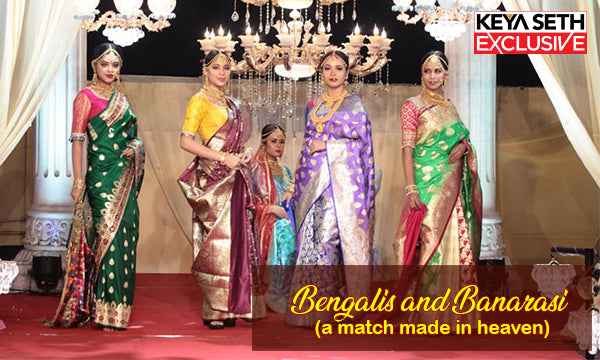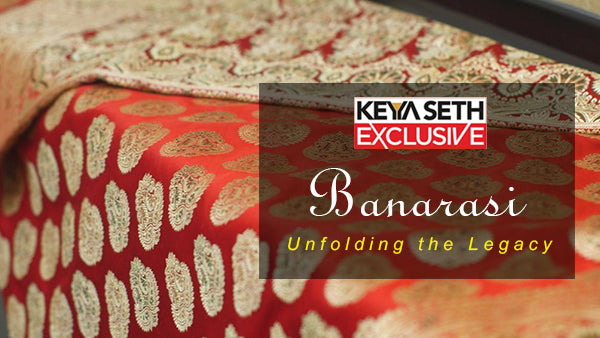India is the seventh-largest country in the world. It measures 3,214 km (1,997 mi) from north to south and 2,933 km (1,822 mi) from east to west. By its vast spread in the geographical aspect, the diversity of customs and regions can be well known.

The land of customs, rituals and religion is not distinct on any front despite being divided by the contour of the border. Where the God and Goddess are equally praised as Allah and his devotees, where the cross is hung in all houses with the sayings of Buddha, where Thanksgiving is equally praised with the lights of Diwali, India is a place of unity, a summit of solidarity and believer of harmony.
But what comes out as the primal indistinguishable choice is the 6 yards of pure grace of Indian Fashion and when we say so we depict the wardrobes engulfed with various colours of saree and its varied elegance.
The saree is not just a fashion sense but a thread stitching the emotions of generations, tradition and culture. India as a country with a variety of variations also offers a beautiful range of sarees inherent from different communities. Among such communities of sarees, Banarasi Sarees holds a special and rich tradition.
Tracing the History of Banarasi Fabric
The Banarasi fabric is considered as one of the popular fabric in Indian Fashion, as it bestows any culture with its richness and royalty. Be it weddings, traditional customs or any Indian ethic celebration, Banarasi Sarees, Kurtas and other ethnic wears pre-dominate the fashion culture.
However, there are many such Indian traditional fashion fabrics like Kanjivaram and Khadi. But Banarsi sarees and fashion has come a long way with huge variants and social importance, specially a Bengali Wedding can never be overlooked without Banarasi sarees. This Banarasi saree is not only making waves in the Indian fashion industry but also in the international fashion world.
The Motivation
Typically customary sarees assortment in India is motivated by some part of specific culture and convention. Banarasi sarees are no special case to this reality. Banarasi silk sarees have a long history of motivation. Ghats of Ganga which have been a center point for Hindu sages since ages, you can frequently observe Hindu divine beings and sanctuaries portrayed in Banarasi sarees.
The Banarasi sarees holds its traces from Banaras (then) Varanasi (now) which is in Uttar Pradesh. This saree is traditionally made in four varieties namely Organza (Kora), Georgette saree, Shatir saree, and Pure silk (Katan).
The many varieties of Banarasi silk saree are organza, satin borders, jangla, Brocades, Tanchoi, cutwork, and Reshambutidar that have interesting designs of animals, birds, floral, fruit, human figures, and geometric patterns. Persian motifs are also included in the Indian designs to create distinct flower patterns of the saree used even today.
The Intrigue Craftsmanship
The specialty lies within its benchmarking purity, strength, durability and exquisitely versatile Silk that is produced with efforts none less than seeking summits. The procedure starts by twisting two strands of natural silk so as to forge the yarn, which when is put forth to fabricate some amazingly enduring fabric. The art of entwining is of medieval ages and was introduced by the majestic Moghul Emperors from the sovereign lands of Persia (present-day Iran) which was and will always be a craft of exemplary artistry. The silk being the stalwart in the world of fabrics is a product extracted from silkworms which are further harvested to confer the fabric softer than divinity.
It usually takes around more or less than a month to complete weaving a Banarasi saree. Making a Banarasi saree requires teamwork and usually more than three weavers work in the creation of this saree. At Keya Seth Exclusive we adore this intricate craftsmanship, our motifs, stiches and art designs ideally represent this weaving beauty.
The Banarasi sarees in Keya Seth Exclusive defines the fashionable and exotic weavings by the designers who use zari, motifs, and emeralds and will surely be one of your favourites to be listed for your wardrobe.
Unveiling the Types & Styles of Banarasi Sarees
- Pure silk (Katan)
Katan is a plain silk fabric. This has woven pure silk threads which are twisted and then woven into pure silk sarees. Katan can be further classified into Katan Butidar where the fabric with katan warp and weft is combined with butis or butas in gold or resham. Katan Banarasis are normally made with a heavy, intricately worked border & comparatively plain body.
- Shattir
Shattir is the sole fabric used to create contemporary and exclusive designs under the name Banarasi.
- Organza (Kora) designed with zari and silk.
Brocades are the most beautiful and richly woven fabric where the patterns are patterned with different designs made by warp and weft. Silver threads are coated with gold and are then woven closely around a silk yarn to create zari brocade.
- Georgette Banarasi Sarees
The most common and known saree form, Georgette is a finely woven light fabric with a simple and plain weave. This is more popular for contemporary sarees.
- Brocade Banarasi
Brocade Banarasi fabric can be found in Buddhist scripture, Tripitaka. When Buddha attained Nirvana, his mortal body was wrapped in a special type of Banarasi fabric. That unique variety of fabric had an exceptional red, yellow & blue glow to it. In the Nirvana Brocade Banarasi Collection we have revived the same fine weaving technique & designs to create a one-of-its- kind range.
- Ganga – Yamuna Banarasi
In the past, both gold & silver zari were used together, in a mix & match pattern to weave Ganga-Yamuna Banarasi. The unique effect of this banarasi fabric was really exquisite. The lighter shade of silver zari & the darker shade of golden zari used to create perfect art pieces weaved on fabric. The same type of weaving & art has been used to create the Ganga-Yamuna collection.
- Tanchoi Banarasi Sarees
This is the beautiful ‘Jamawar’ style paisleys or Labyrinth woven by zari. This is another kind of Benarasi saree which is very popular for weddings, and artisans from Banaras weave patterns on these sarees with colorful weft silk yarns. The pallu of this sari is often decorated with large motifs of paisleys while the border might have criss-cross patterns.
- Cutwork Banarasi Sarees
These are the sarees which are not as expensive as the ones mentioned above, basically the less expensive version of Jamdani sarees. This one is made using cut work technique on plain texture using some cotton mixed with the silk. Most popular motifs which are featured in cut work sarees are jasmine, marigold flowers, creepers and leaves.
- Tussar Banarasi
Tussar silk is a special type of pure silk produced by the Tussar silkworms. The specialty of this silk lies in its’ lightweight & textured finish that offer an unmatched elegant look. Tussar Banarasi is often made by using finest quality matte or normal zari or resham thread on Tussar silk creating intricate patterns. However, the natural kora colour of the base silk is usually retained in the final product to get the special look.
- Karwa Buti Banarasi
Karwa Buti Banarasis are considered unique particularly due to the different pattern of Buti present in the body of this type of Banarasi. Use of multi coloured zari & thread to weave intricate all over floral motifs is a specific feature of this gorgeous Banarasi type. Solid border & pallu, with intricacies at both the sides completes the look.
Never the less, Banarasi, is a kind of magical fabric which cannot be limited, with the advent of modern technique and craftsmanship, the traditional elegance of fabric is now fusional in many different styles and patterns.
At Keya Seth Exclusive, The Banarasi Carnival embarks the Legacy of Banarasi Fabric and its tradition. With 40,000 Banarasis of 60 different varieties will be showcased at Keya Seth Exclusive, Kalighat from 20th of November till 06th of December, 2020. Like last year this year too will mark huge collection of Benarasi and its forms under one roof.
Thus, Keya Seth Exclusive has followed the same path to find the root of Banarasi weaving art and has presented the rich history of Banarasi evolution as well as the latest experimental designing through this Grand Carnival


